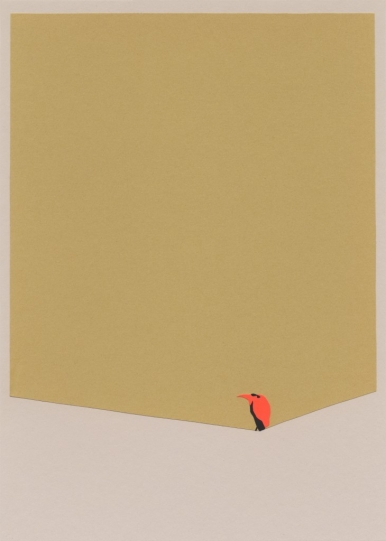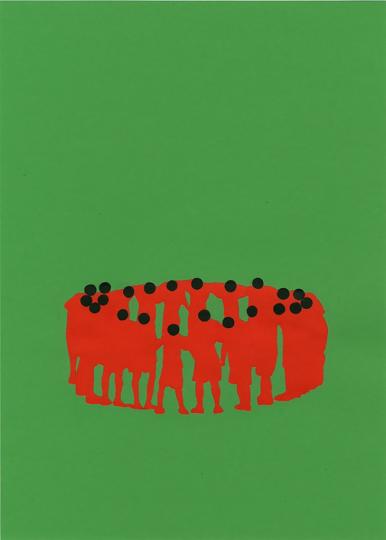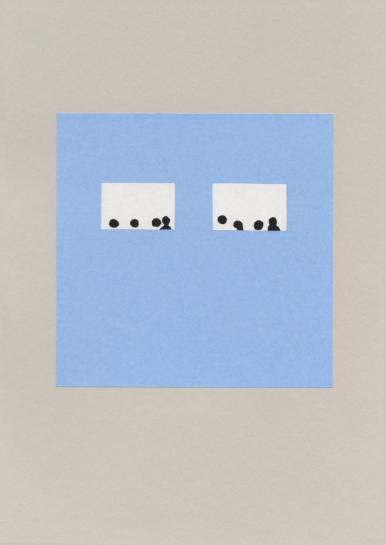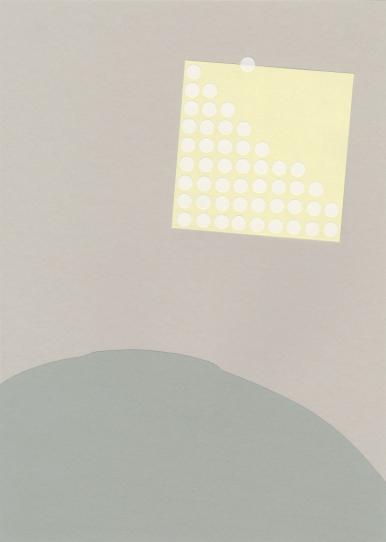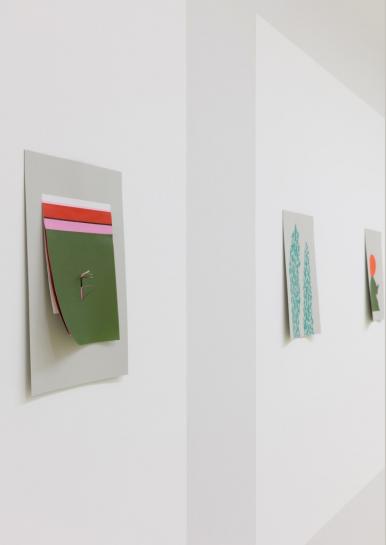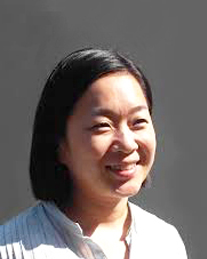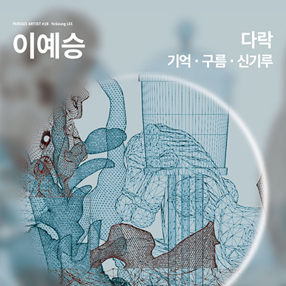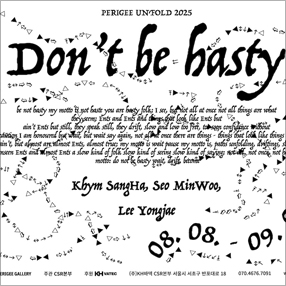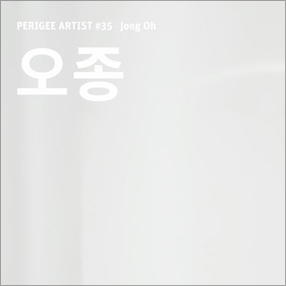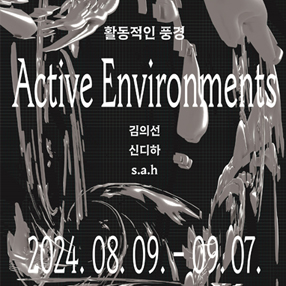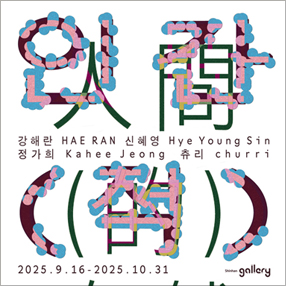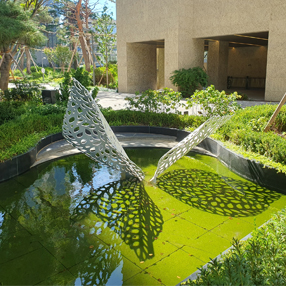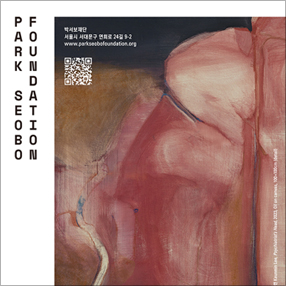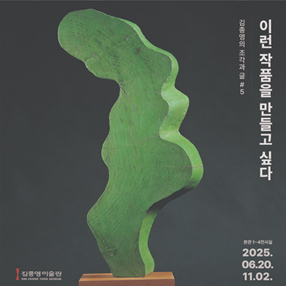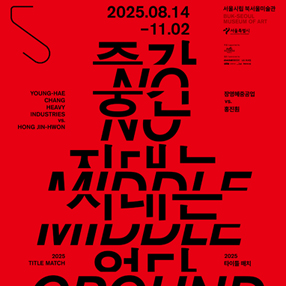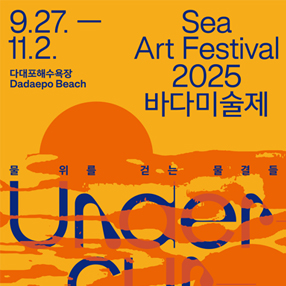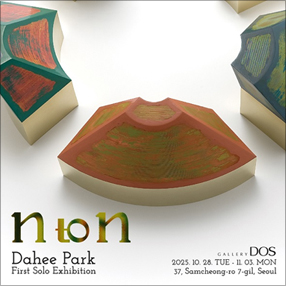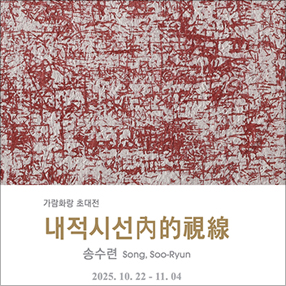본문
-
임자혁
마중 Greeting 2018, Colored paper on paste board, 29.7cm x 21cm
-
임자혁
고리 만들기 Making a Ring 2018, Colored paper, 29.7cm x 21cm
-
임자혁
경청 Listening Closely 2018, Colored paper on paste board, 29.7cm x 21cm
-
임자혁
종잇조각 A Piece of Paper 2017, Sticker and colored paper on paste board, 29.7cm x 21cm
-
임자혁
착륙 Landing installaion view, Perigee Gallery, 2018
-
Press Release
끊임없이 미끄러지기
임자혁은 드로잉과 회화, 공간에 바로 그려내는 벽화 등 다양한 작업을 해오고 있다. 이번 전시에서는 그의 드로잉 작업 중에서 색종이를 오려서 어떤 모양을 만들고 붙여 나가는 작품들을 선보인다. 그가 만들어 내는 규격화된 크기에 각각 다양한 이미지들로 채워진 다수의 드로잉 작업은 어떻게 읽어 낼 수 있을까? 먼저 그가 드로잉을 대하는 제작 방식을 통해 접근해 보도록 하자.
그에게 그림을 그려내는 것은 선을 긋고 색종이를 오려서, 화면 어딘가에 배치하고 붙이는 단순한 반복의 과정이다. 우선 작업에 착수하게 만드는 시작점은 일상을 살아가면서 접하게 되는 다양한 시각적인 모양들과의 만남이다. 그런데 작가의 주변에서 발견되거나 관찰되는 시각적 모양을 소재로 삼아 작업이 출발한다고 해서, 일상의 경험을 통해 접하게 되는 풍경을 작업으로 옮겨내어, 우리의 경험들과의 접점을 공유하기 위해 무엇인가를 재현하는 것이 아니다. 보여지는 결과물은 가벼운 드로잉처럼 보이지만 작가에게는 꾸준한 시간을 두고 색, 선, 면, 모양을 가지고 어떻게 자유롭게 다룰 수 있을까에 대한 끊임없는 생각의 시간과 회화적 공간에 대한 감각을 표출하는 장(場)으로 볼 수 있다. 물론 어떤 것을 그려야겠다는 의도를 가진 시작점과 작가가 평소에 미리 잘라 놓은 각종 모양들과 같이 준비되어 있는 기획의 과정이 있는 것도 있지만, 이는 모두 어떤 모양과 색, 선으로 구성될지 확정적이지 않으며, 어떻게 진행되어 나갈지 작가 자신도 확신할 수 없는 불확실한 상태로 텅 비어진 채 대기 중이다. 어떤 도구로든지 선을 긋고 색을 칠하는 행위의 과정은 작가의 신체적 움직임과 동일시될 수 있고 습관적인 틀에 귀속되어 본능적으로 반복적인 행위의 틀에 갇혀버릴 수 있다. 그런데 자신의 의도에 따라 그린 어떤 모양들을 오려내거나 혹은 색종이나 스티커 그대로의 모양을 활용하여 배치하는 방식은 서로 다른 성향을 뒤섞어 중화시켜 어느 한쪽으로 치우칠 수 있는 형식적 딱딱함에서 벗어나 자연스럽고 부드러운 균형을 잡기 위한 작가의 프로세스로 볼 수 있다. 예를 들면 선을 그릴 때에는 이것이 어떻게 더 진행되어야 하는지 끊임없이 의식적으로 고민하면서 진행되지만, 종이를 자르는 것은 자신이 그려 놓은 선을 따라서 단순 반복적인 노동을 통해 점점 무의식적 행위로 진행되므로 긴장했던 것은 느슨하게 풀어지게 된다. 그리고 이러한 상황은 화면의 구성이라는 단계로 넘어가게 되면 느슨함은 다시 긴장을 하면서 집중하게 되는 전환이 일어나기 마련이다. 하지만 작가는 위에서 살펴본 것과 같이 한 단계와 단계 사이에 상반되는 심리적인 시간의 틈을 만들어 계속해서 공기를 바꾸는 환기의 과정을 통하여 자신이 추구하고 있는 자유롭고 유연한 회화적 감각을 실험하고 있다.
이번에는 이러한 제작 방식으로 만들어지는 드로잉에서 보여주고 있는 그리는 것에 대한 태도에 대해서 살펴보자. 일단 먼저 눈에 띄는 것은 종이다. 종이는 두 가지로 구분할 수 있는데, 가장 기본이 되는 장(場)으로서의 규격화된 종이와 색종이를 오려서 만들어 놓는 색 면 조각들이다. 이것들은 작가의 작업에 가장 기본이 되는 요소로 이렇게 작은 단위의 기본 모양들을 미리 만들어 놓는 행위와 기본적인 여러 가지의 모양들을 통해 만들어지는 단편적인 하나의 드로잉들은 모두 큰 전체의 체계 중에서 다른 구성 요소와 독립적인 하나의 구성 요소를 말하는 모듈과 같은 개념으로 볼 수 있다. 쪼개져서 가장 기본이 되는 것으로 분리되고, 이것들이 모여서 집합적인 모듈이 되어 드로잉들의 의미가 확장되기도 하기 때문이다. 이렇게 그의 작업에서 명확하게 드러나는 색 면들은 아무리 보잘것없이 작은 것이라 할지라도 자신만의 모양과 색을 통해 독립적인 위치를 차지하고 있다. 이것은 색 면과 색 면이 겹쳐질 때에도 중첩되어 퇴색되는 것이 아니라 자신만의 색을 명확하게 유지하는 것에서 드러난다. 결국 그의 작업에서의 색 면들은 자신이 경험한 소재들을 서사적으로 이야기를 하기 위해서라기보다는 단어들이 분절되어 함축적 의미를 가지는 시와 같은 구조를 만드는 기본이 되는 재료다. 이런 것을 인지하고 다시 그의 작업적 행위가 드러나는 드로잉들을 살펴보면 이곳은 색과 어떤 모양들로 이루어지는 공간이다. 이 공간은 우리가 살고 있는 공간처럼 입체적인 것이 아니라 납작한 평면의 공간이다. 따라서 그에게 있어 회화적 시각은 실제의 공간들을 면들의 구조로 바라보고 있다는 생각이 든다. 그리고 그것을 표현하기 위한 종이는 결국은 어떤 의미를 부여해도 그저 평면일 뿐이고, 이렇게 평면의 속성을 다른 의미로 해석해서 굳이 내밀한 무한의 공간으로 만들 이유도 없는 것이다. 작가가 이야기하듯이 그저 평면과 어떤 모양과 색과 선을 가지고 있을 뿐인 그의 드로잉은 어떤 서사적 이야기나 대단한 논리와 상관없다. 물론 하나의 낱개의 작업이거나 드로잉들이 쌓여가면서도 다양한 방식과 형태가 혼재되어 보이는 것은 어떤 고정된 틀을 유지하는 것에 대한 의심에서 시작된 것이다. 하지만 작가는 화면 안에서 자유롭게 유영하고 싶은 자신의 의도가 있다고 해서 관객이 작업을 그렇게 읽어내어야만 한다고 생각하지는 않는다. 이는 공산품 규격에 따라 제작된 종이가 변형되지 않은 채 그의 작업의 장(場)이 되는 것에서 알 수 있듯이 그에게 중요한 것은 어떤 특정한 의도를 위해서 모든 것을 계획하고 재단하는 것이 아니라 자신만의 회화를 구축하기 위해 가장 기본적인 화면에 집중하는 것, 그리고 그의 생각들을 자유롭게 펼쳐나가면서도 어느 한편으로 치우치지 않으려는 태도이다. 그렇기 때문에 관객들도 그의 작업을 볼 때에는 각자의 ‘나’라는 주체가 가지고 있는 여러 가지 시각적 경험을 끌어내어 조리개를 맞추듯이 다양한 시선으로 바라보는 태도가 필요하다. 따라서 보이는 그대로 인간, 자연, 동물, 사물들의 풍경이 주는 분위기로 해석하여도 좋고, 하나하나의 개별의 모양과 색, 이들이 모여 이루어지는 모양이나 색들의 구성을 즐겨도 된다. 혹은 여러 모양들이 드러나는 드로잉들을 비교해보아도 좋을 것이다. 이렇듯 그의 작업은 하나의 시각으로 해석하거나 작가의 의도 외에는 읽어 낼 방법이 없다는 식의 딱딱한 방식으로 볼 이유가 없다.
마지막으로 그의 드로잉에서 어떤 의미들을 발견할 수 있을지 살펴보자. 우리는 작업에서 바로 인식되는 일상적인 대상들, 기존의 색지들이 가지고 있는 알록달록한 밝은 색감, 펜으로 그려지는 추상적인 선들에 의한 운동감, 작은 사이즈와 같은 표피적인 정보들을 어떻게 읽어낼 수 있을까? 지금까지 살펴본 대로 작가는 고정된 틀을 벗어나기보다는 틀에 갇히지 않으려고 노력한다. 그리고 이를 실행하는 방법은 드로잉이라는 반복적인 작업을 통해 그의 예술적 행위를 일상적인 일과(日課) 같이 특별하지 않는 평범한 일로 만드는 것이다. 그런데 이런 그의 행위들은 자신의 드로잉을 거대하고 서사적인 혹은 추상적인 스펙터클한 작업과의 대비를 통해 독특한 위치를 부여하여 그 중요도를 격상시키기 위한 전복의 행위가 아니다. 다시 말해 소소한 일상의 삶을 대단한 것으로 부각시키려 하지 않는다. 오히려 작가로서 하는 예술 활동을 대단치 않은 것으로 만들어 내어 사람들이 하고 있는 일상적인 삶과 별반 다르지 않게 만드는 것이다. 이는 자신의 삶과 작업을 동일시하는 과정을 통해 사변적인 거추장스러움을 벗어나 자유로워지기 위함이다. 그래서 꾸준히 일상처럼 해오고 있는 그의 드로잉들은 더 넘치지도 조금 부족하지도 않을 정도의 균형을 추구하며, 이러한 방식을 통해 어떤 모양을 가진 것들을 잠시 화면에 착륙 시킨다. 하지만 작가는 현실에서는 완벽한 자유로움에 도달할 수 없음을 인지하고 있기에, 드로잉 작업을 하나씩 완성해 나가지만 모두 임시적인 상태에 머무를 수밖에 없다. 다만 어떤 특정한 경계에 머무르지 않도록 꾸준히 생각과 행동의 균형을 맞추면서 자연스럽게 그의 작업에서 구상, 비구상, 계획과 우연, 허술함과 치밀함이 동시에 존재할 수 있게 만들 뿐이다. 이렇게 끊임없이 작업에서 유영하는 것이 자신의 일상과 밀착된 작업을 하는 임자혁이 나가고자 하는 예술에 다가가는 길이다.
정리해 보자면 그의 색종이 그림은 일시적으로 고정하는 모양들을 통해 드러나는 것, 작가의 표현을 빌리자면 흔한 모양을 엉뚱한 곳에 착륙시키는 데에 적합한 형식으로 보인다. 화면 안에서 일단 무엇인가 시작되면 출발점은 이내 잊혀지고 어딘가로 도착하여 내려앉을 곳을 향한다. 그러나 이러한 과정도 결국 다시 어딘가로 출발하기 위한 반복적인 순간의 한 찰나의 시간에 불과하다. 따라서 그의 작업은 이것과 저것 사이의 경계를 가볍게 넘나들면서 불확정적이어서 무엇으로도 확장될 수 있는 가능성으로 충만하다. 그렇기에 우리는 그의 삶과 예술로부터 출발해 우리 앞에서 미끄러지듯이 스쳐 지나가는 단순한 표면을 가졌지만 명확하게 규정하기도 힘든 작업들을 마주하게 된다. 이것은 작가의 작업이 반복적인 일상이 순환하면서도 그 속에서도 계속해서 새롭게 변화해 가는 인간의 삶과 밀착되어 있다는 것을 알 수 있다. 인간은 태어나서 죽음에 이르는 시간 동안 끊임없이 고민하며 어떤 주체로 각자의 이야기를 만들어 나간다. 이렇게 각자 살아가는 이야기는 다른 삶은 가치를 판단하는 대상이 될 수 없으며, 우리가 주목해야 하는 것은 무엇이 될지 알 수 없는 삶의 불확정성과 가능성이다. 작가에게 있어 이는 예술도 마찬가지이다. 따라서 작가는 자신이 마주하는 화면 안에서 일상적인 것을 소재로 회화적 장(場)을 지속적으로 만들어 내지만, 그것이 특별한 행위로서 작용되는 것을 경계한다. 그렇기에 임자혁은 한 방향으로만 일관하지 않도록 그렇다고 엉뚱한 곳으로만 가지 않도록 균형을 유지하려는 자세로 가볍지만 가볍지 않고, 별것 아니지만 별것인 가벼운 드로잉들을 앞으로도 계속 세상에 유영시킬 것이다. ■ 신승오 페리지갤러리 디렉터
Sliding Endlessly
Yim Ja-hyuk has worked in various genres of art ranging from drawings and paintings to wall paintings which are immediately applied to spaces. The exhibition displays her drawings have made by cutting out colored paper and applying them to a pasteboard. How can we interpret a multitude of drawings full of diverse images on planes standardized in size? We can approach her attitude toward drawing from the manner in which she makes her works.
To the artist, both painting and drawing are dependent on a process of rendering lines, cutting out pieces of colored paper, arranging them, and putting them somewhere. One departure point of her work is to encounter a variety of visual images in everyday life. Even though she takes the motifs of her work from such visual images discovered and observed in her surroundings, her works are not a representation of something meant to demonstrate correlations in our quotidian experiences. While her resultant images appear to be lighthearted drawings, they are regarded as a platform to express her ideas on how to address such modeling factors as colors, lines, planes, and forms and how to use her sense of pictorial space without restriction for a long stretch of time. Of course, she initially has something in mind that she wants to create. She even goes through a process of preparing diverse forms that are cut out from a piece of paper in advance. All the same, the different shapes she cuts out remain indeterminate and uncertain: even the artist cannot be sure of what composition they will forge or how the work will progress. They are in a tentative, empty state, waiting to be addressed by the artist.
The process of drawing lines and applying colors with a tool can be identified by an artist’s physical movements and may be trapped by nature in the frame of repetitive actions, molding some habitual frame. The way in which she cuts out the shapes she created according to her intent and arranges them on a piece of colored paper or a sticker can be read as the process of her work to bring about some natural, gentle balance through a mixture of different dispositions, departing from any sense of formal rigidity. For example, she is always conscious of and concerned about how to draw lines but she tends to feel relaxed when she cuts out shapes since such a task is carried out unconsciously as a repetitive action. When she reaches the construction phase of her scenes, however, this situation tends to undergo a shift from looseness to tension and concentration. As examined above, however, the artist has experimented with her liberal and flexible pictorial senses by engendering a contrastingly psychological time gap between the stages of her work.
We may examine her attitude toward painting through the way in which she completes her drawings. There are two types of paper used in her works: paper standardized in size as an elemental forum for her work and paper as color-field pieces that are made by cutting colored paper. These are the most elemental factors in her work. The act of making basic forms as a small unit in advance can be seen through the concept of a module. Composed of various elemental forms, her works are the results of integrating other independent elements with such modules. Her drawings come to develop an expanded meaning when they are divided into their most fundamental parts or when some collective modules are molded as they gather together. The color fields apparent in her works take up their own independent position via their forms and colors regardless of how trivial or small they may be. This is revealed when a color field overlaps others but it clearly maintains its own color instead of becoming discolored. The color fields in her works are, after all, an element used to forge a poem-like structure in which words are segmented and take overtones rather than make descriptive comments on the subject matter she has experienced.
When her drawings are re-examined after noticing this, they look like spaces made up of colors and shapes. These spaces are not three-dimensional like the one in which we reside but are two-dimensional like a flat surface. She seems to possess a pictorial perspective from which she can see real spaces as the structures of planes. A piece of paper is nothing but something with a flat surface, no matter the way in which it is given meaning. There is no reason to make her work’s two-dimensional space a clandestine intimate space while interpreting the attribute of a plane to have different meanings. As she mentions, her drawings with forms, colors, and lines on a flat surface have nothing to do with any narrative or great logic. Of course the reason of the stacked drawings seems as accumulated different styles and forms began with doubts about maintaining a fixed frame. And yet, she doesn’t want the viewer to read her intention in her scenes. What counts in her work is not to plan or design for any specific purpose but to concentrate on the most elemental factors in forgingher own works and to unfurl her ideas unrestrictedly without being inclined to any one side. Thus, it is necessary for viewers to draw out various visual experiences pertaining to each subject and view them from diverse perspectives when seeing her work. Therefore, you may interpret her works with an atmosphere aroused from the scenes of men, nature, animals, or things as they are visible or you may enjoy each form and color or the composition of these factors. Or, even still, you may compare one with other drawings with different shapes. As such, there is no reason to interpret her works from just one single viewpoint or see them as having a rigid intent.
Lastly, we examine the meaning of her drawings. How should we interpret the quotidian objects immediately perceived in her work, the bright and colorful hues on colored paper, the sense of movement aroused by abstractly rendered pen lines, and the superficial snippets of information? As examined above, Yim strives to not be trapped in a fixed frame rather than break away from one. One way to carry this out is to make her artistic practice something common like daily work through the repetitive task of drawing. Her practice is not an act of subversion to heighten the importance of her drawings, nor is it meant to lend any specific position to them via a contrast with a massive, narrative, abstract, or showy work. In other words, she does not give prominence to everyday trifles. She tries to ensure that her artistic activity is nothing special like an everyday affair. Doing so allows her to be free from any speculative cumbersomeness through the process of identifying her life with her work. Her drawings which she consistently works on every day seek a balance neither overly sufficient nor insufficient, thereby capturing something figurative. As Yim realizes that she is unable to attain perfect freedom in reality, she completes her drawings one by one but they are all temporary. She incorporates contrasting elements such as figurative and non-figurative images, scheme and happenstance, and slackness and meticulousness simultaneously in her works, and pursues equilibrium between her ideas and actions without being caught at a certain border. Yim can approach the kind of art she pursues by remaining fluid at all times while creating works closely associated with her everyday life.
To sum up, her colored-paper pictures seem to be appropriate for unmasking something with temporary fixed images or applying common shapes to some whimsical site according to the artist’s statement. Once something starts in the scene, images leave for a site to land as its departure point is soon forgotten. All the same, this process is nothing more than the time of recurring moments to depart for somewhere. Thus, her work is full of possibilities to expand, as it is uncertain, cutting across the boundaries of this and that. As a result, we come to face her work that starts from her life and art and has a pared down surface sliding by us and is hard to define. This suggests that her work is closely associated with human lives that have constantly changed despite daily routines. Humans have consistently been concerned about something and laid out our own stories from birth to death. Each individual’s life story cannot be adopted to judge another’s life. Noteworthy is uncertainty and possibility in life: we do not know what our lives could be. So is art to Yim Ja-hyuk. Thus, the artist has consistently created pictorial fields in her scenes with the subject matter of everyday things, but she previses its operation as something special. Therefore, she will have her drawings that are light but not light and nothing but are not anything continuously fluid in the world with an attitude to keep a balance, not to be consistent in just one direction or take a wrong direction. ■ By Seung Oh Shin, Director of Perigee Gallery
전시제목임자혁: 착륙
전시기간2018.09.06(목) - 2018.11.10(토)
참여작가 임자혁
관람시간10:30am - 06:00pm
휴관일일요일 휴관
장르회화
관람료무료
장소페리지갤러리 PERIGEE GALLERY (서울 서초구 반포대로 18 (서초동, (주) KH바텍 사옥) B1)
연락처070.4676.7091
-
Artists in This Show
-
1976년 출생
-
페리지갤러리(PERIGEE GALLERY) Shows on Mu:umView All
Current Shows
-
인간(적) 자연
신한갤러리
2025.09.16 ~ 2025.10.31
-
류신정 Ryu, Shinjung : 유유 항성 Flow star
티 하우스
2025.10.01 ~ 2025.10.31
-
이근민: 깨어나는 경계들 Awakening Boundaries
박서보재단 26SQM
2025.09.01 ~ 2025.10.31
-
김종영의 조각과 글 part 5 《이런 작품을 만들고 싶다》
김종영미술관
2025.06.20 ~ 2025.11.02
-
2025 타이틀 매치 《장영혜중공업 vs. 홍진훤: 중간 지대는 없다》
서울시립 북서울미술관
2025.08.14 ~ 2025.11.02
-
2025바다미술제 / Sea Art Festival 2025
다대포해수욕장
2025.09.27 ~ 2025.11.02
-
박다희: n to n
갤러리 도스
2025.10.28 ~ 2025.11.03
-
송수련: 내적시선 內的視線
가람화랑
2025.10.22 ~ 2025.11.04




